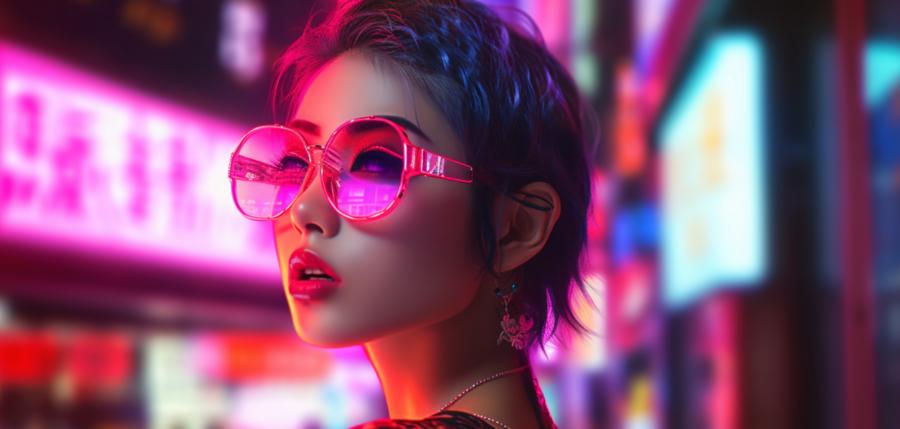A Dive into the Fashion History and Current Trends of Tokyo

The Land of the Rising Sun: Setting Fashion Trends Since Forever
Once upon a time, in the far East, there was an island nation that was so fashion-forward, it could make Parisians weep with envy. I'm talking, of course, about Tokyo. This dazzling metropolis has long been a birthplace of both traditional and contemporary fashion trends. Tokyo, or Edo as it was once known, has long been a city that prides itself on being a bastion of creativity and iconoclasm. When it comes to fashion, Tokyo has always been a land that has embraced what is considered "the new" with fervent gusto.From Kimonos to Kabuki: The Origins of Tokyo's Fashion Identity
The history of Tokyo's fashion identity can be traced back to the Edo period (1603-1868), where kimonos were the standard attire. The kimono, a traditional Japanese garment, is a symbol of the country's rich cultural heritage, and even today, it is still worn for special occasions and ceremonies. The opulent, colorful, and intricately designed outfits of the kabuki theater are another example of Tokyo's enduring fashion legacy. This classical Japanese dance drama, which originated in the 17th century, is renowned for its elaborate costumes that are both functional and artistic masterpieces.Enter the Harajuku: The Birthplace of Tokyo's Modern Fashion Scene
In the decades following World War II, Tokyo experienced a massive cultural and economic boom. This gave rise to the emergence of distinct fashion subcultures, with the most famous being the Harajuku district. Harajuku is often considered the epicenter of Tokyo's modern fashion scene, and it is here that you'll find a mishmash of styles and trends, ranging from traditional kimonos to punk rock attire. This area, which acts as a magnet for Japan's youth, has become synonymous with the city's ever-changing fashion landscape.- Lolita: One of Harajuku's most well-known styles is Lolita, a fashion subculture that draws inspiration from Victorian and Rococo clothing. Accented with bows, lace, and frills, Lolita fashion has evolved into several different sub-styles, each with their own distinct themes and influences.
- Visual Kei: Visual Kei is another fashion movement that emerged from the Harajuku district. This androgynous look, which is influenced by glam rock and punk fashion, is characterized by dramatic makeup, ornate hairstyles, and flamboyant clothing.
- Gyaru: Gyaru fashion is a trend that combines Western elements, such as miniskirts and high heels, with Japanese aesthetics. The Gyaru style, which is heavily influenced by American pop culture, often features blonde or brightly dyed hair, tanned skin, and heavy makeup.
Tokyo Fashion Today: A Melting Pot of Styles
Today, Tokyo is a city that celebrates the diverse and eclectic fashion tastes of its denizens. In recent years, the city's fashion landscape has become even more varied, with streetwear brands, vintage stores, and high-end designer boutiques all coexisting in harmony. Some notable trends and styles that have made their mark on the streets of Tokyo include:- Athleisure: Tokyo's residents are no strangers to the concept of comfort, and this is evident in the city's current love affair with athleisure. From high-tech sneakers to functional outerwear, the athleisure trend has taken Tokyo by storm.
- Unconventional Layering: Tokyoites are known for their penchant for experimental and avant-garde fashion, and this is embodied in their approach to layering. It's not uncommon to see locals wearing multiple layers of clothing, often with contrasting patterns and textures, creating a unique and visually striking ensemble.
- Gender Fluidity: Tokyo's fashion scene has long been characterized by its fluid approach to gender norms, and this is exemplified in the city's current embrace of androgynous and gender-neutral clothing.
Article kindly provided by foreverinfashion.org
Latest Articles
- Style That Works With Your Body, Not Against It
- Fashion Tourism on Wheels: Curated Shopping Routes Led by Chauffeur Guides
- The Charm of Certainty in a World of Indecision
- Can an Everyday T-Shirt Be Turned into a Modern Heirloom?
- Color, Ceremony, and the Psychology of Celebration
- Styling Graphic T-Shirts for Different Body Types
- Getting Kids to Wear Their Hats Without a Bribe or a Meltdown
- Mastering the Art of Being the Unnoticed Photographer
- Quiet Sportswear Moves Loudly
- Fashion's Most Misunderstood Color Is Brown
- Weight Matters When Cotton Gets Real
- SKU's Out for Summer: Why Your Warehouse Is Melting Down
- Ink as Accessory - How Tattoos Are Replacing Jewelry in Modern Style
- Decoding the Y2K Aesthetic with Style and Sanity
- Accessories
- Jewellery
- Footwear
- Skirts and Dresses
- Shirts and Blouses
- Beauty and Makeup
- Fashion Photography
- Sustainable Fashion
- Street Style
- Fashion History
- Fashion Business
- Fashion Styling
- Fashion Events
- Plus-Size Fashion
- Men's Fashion
- Women's Fashion
- Fashion Blogging
- Fashion Trends
- Fashion Retailers
- Fashion Tips and Advice
- Fashion Business Startups
- Fashion Around the World
- Lingerie
- Sportswear
- Weddings

